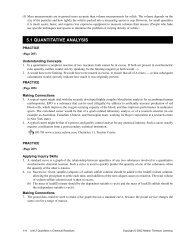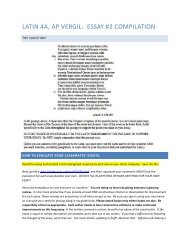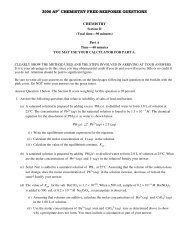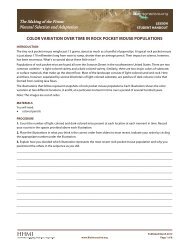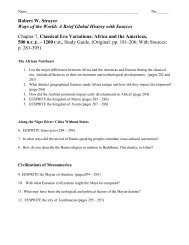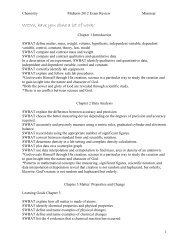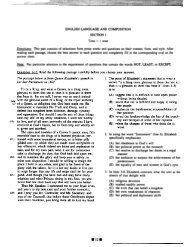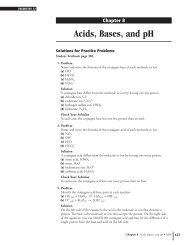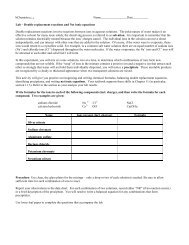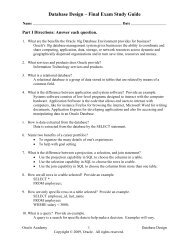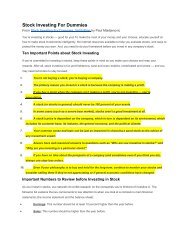Create successful ePaper yourself
Turn your PDF publications into a flip-book with our unique Google optimized e-Paper software.
e. They are often accompanied by the release of enormous amounts of energy.<br />
____ 221. Which statement concerning stable nuclides and/or the "magic numbers" (such as 2, 8, 20, 28, 50, 82 or 128)<br />
is false?<br />
a. Nuclides with their number of protons equal to a "magic number" are especially stable.<br />
b. Nuclides with their number of neutrons equal to a "magic number" are especially stable.<br />
c. Nuclides with the sum of the numbers of their protons and neutrons equal to a "magic<br />
number" are especially stable.<br />
d. Above atomic number 20, the most stable nuclides have more protons than neutrons.<br />
e. The existence of "magic numbers" suggests an energy level (shell) model for the nucleus.<br />
Particles<br />
Masses of subatomic particles that may be useful for the following questions.<br />
electron 0.00055 amu<br />
proton 1.0073 amu<br />
neutron 1.0087 amu<br />
____ 222. Refer to Particles. The mass of one atom of silicon is 29.9738 amu. What is its mass deficiency?<br />
a. 1.742 amu<br />
b. 1.757 amu<br />
c. 0.275 amu<br />
d. 0.413 amu<br />
e. 0.272 amu<br />
Values 26<br />
Values that may be useful for the following questions.<br />
speed of light = 3.00 10 8 m/s<br />
1 J = 1 kg•m 2 /s 2<br />
1 cal = 4.18 J<br />
____ 223. Refer to Values 26. The mass deficiency for an isotope was found to be 0.410 amu/atom. Calculate the<br />
binding energy in J/mol of atoms.<br />
a. 3.69 10 13 J/mol<br />
b. 1.23 10 20 J/mol<br />
c. 3.69 10 3 J/mol<br />
d. 1.23 10 3 J/mol<br />
e. 1.23 10 23 J/mol<br />
____ 224. Refer to Values 26. Calculate the nuclear binding energy in kJ/g of an isotope that has a mass deficiency of<br />
0.6050 amu/atom. The isotope has a mass of 63.9280 amu.<br />
a. 5.44 10 10 kJ/g<br />
b. 1.89 10 10 kJ/g<br />
c. 2.97 10 8 kJ/g<br />
d. 3.48 10 12 kJ/g<br />
e. 8.52 10 8 kJ/g<br />
____ 225. Which isotope below has the smallest nuclear binding energy per gram? (No calculations are necessary.)<br />
a. He




